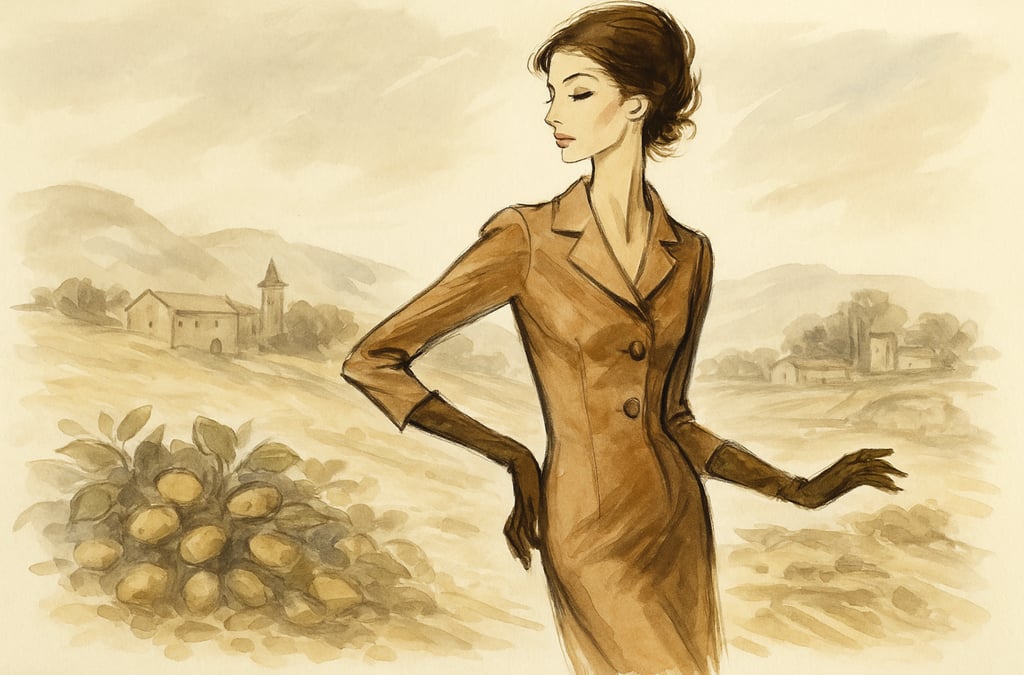How the Potato Saved Europe — Then Nearly Killed It
Discover how the potato transformed Europe—feeding millions, fuelling growth, and then nearly destroying Ireland when blight struck, killing over one million.
FOOD HISTORY & TRADITIONS


Few foods have shaped Europe’s history as dramatically as the potato. When this humble tuber arrived from South America in the late 16th century, Europeans were sceptical. It was a plant from the New World, alien to their diets and often met with suspicion, even fear. But within two centuries, the potato became a lifeline—feeding millions, bolstering populations, and fuelling armies.
Yet this agricultural miracle came with a catch. By the mid-19th century, much of Europe had become so dependent on the potato, especially in Ireland, that when disease struck, the result was one of the deadliest famines in modern history. The same crop that had saved Europe almost destroyed it.
From Curiosity to Lifeline
The potato’s journey from the Andes to European tables began in the late 1500s. Spanish explorers brought it home, where it was first grown as a botanical curiosity rather than a staple food. Early on, it was met with suspicion; some associated it with leprosy or considered it unfit for Christians because it wasn’t mentioned in the Bible.
But the plant’s benefits became undeniable. Potatoes thrived where grains struggled. They tolerated cold climates, grew in poor soils, and produced enormous yields per acre. One acre of potatoes could feed a family more reliably than an acre of wheat or rye.
By the 18th century, potatoes were a cornerstone of European diets, particularly among the rural poor. In places like Prussia and France, governments even promoted the crop to stave off famine. In Ireland, where landholdings were small and poverty widespread, the potato became more than just a staple—it became the primary food source for much of the population.
The Miracle Crop Turns Deadly
This heavy reliance on a single crop came with hidden risks. In the 1840s, those risks became tragically clear when Phytophthora infestans, a waterborne pathogen known as potato blight, swept through Europe. The disease blackened leaves, rotted tubers, and rendered entire harvests worthless almost overnight.
Mainland Europe suffered losses, but most regions had diversified diets—grains, livestock, and trade networks cushioned the blow. Ireland, however, was almost entirely dependent on the potato, especially among tenant farmers and labourers who subsisted on little else. When the blight struck repeatedly from 1845 to 1852, the consequences were catastrophic.
Over one million people died from starvation and disease. Another million emigrated, many to North America, creating one of the largest waves of migration in the 19th century. Ireland’s population plummeted by nearly a quarter, and the famine left scars on its society, culture, and relationship with Britain that would endure for generations.
Beyond Nature: How Policy Made It Worse
While the blight was the trigger, the devastation of the Irish Famine wasn’t purely a natural disaster. British economic and political policies at the time deepened the suffering. Food exports from Ireland continued even as its population starved, and relief efforts were slow, limited, and often tied to punitive workhouse systems.
This combination of crop failure and systemic neglect turned a crisis into a catastrophe. The famine remains a defining moment in Irish history, not only for the lives lost but for the deep mistrust and anger it fostered toward British rule.
Fun Fact: The Same Blight, Different Outcomes
The same potato blight struck other parts of Europe, including Scotland, Belgium, and parts of Germany, but these regions avoided famine on Ireland’s scale. Why? Their populations had more varied diets and access to alternative food sources, proving that Ireland’s monoculture dependence—combined with political and economic neglect—was at the heart of the disaster.
Lessons from a Tragedy
The story of the potato in Europe is a tale of duality. On one hand, it was a miracle crop that transformed diets, boosted survival rates, and allowed populations to grow. On the other, it became a cautionary tale about the dangers of over-reliance on a single food source.
The Irish Famine reshaped not only Ireland’s population but also global migration patterns, as millions of Irish emigrants built new lives abroad, especially in the United States and Canada. It also sparked conversations about land reform, tenant rights, and agricultural diversity that would echo through the 19th and 20th centuries.
Even today, the lessons remain relevant. Agricultural monocultures—whether of potatoes, wheat, or corn—continue to carry risks, making crop diversity and resilient farming systems essential to avoiding future crises.
The Potato’s Enduring Legacy
Despite its dark chapter, the potato remains central to European and global diets. It continues to feed millions, and its history serves as both a reminder of human resilience and a warning about fragility.
The next time you mash, roast, or boil a potato, remember that this unassuming tuber once reshaped Europe twice: first by saving it, and then by nearly destroying it. Its legacy is a story of survival, tragedy, and the enduring balance between abundance and risk.
